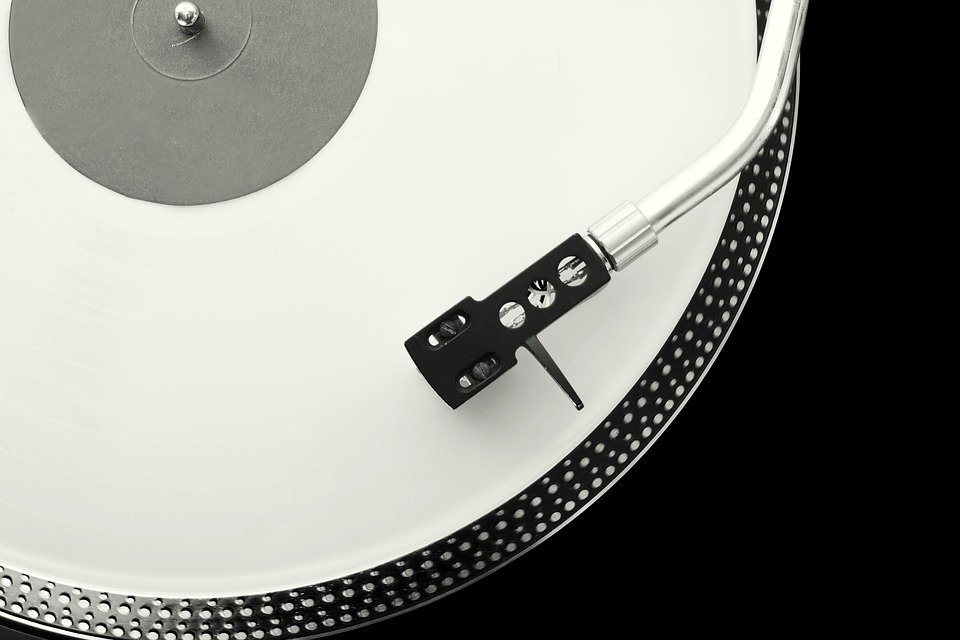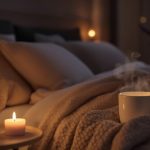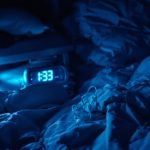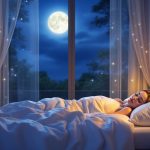
Basics of Sound
Did you know that when you hear a sound, your brain immediately interprets two key properties to help you understand it:
- Frequency/Pitch – Is the sound low like a bass or high like a scream?
- Amplitude/Intensity – Is the sound quiet like a whisper or loud like a vacuum?
Vibrations that travel through the air like a wave produce sound. The air particles vibrate, which causes the particles around them to vibrate as well. The further the sound travels from its source, the fainter it becomes. The sound waves travel through the air and into your ear. The bones in your ear amplify the sound and your brain decodes the sound waves.
Frequency
Frequency describes how fast sound waves vibrate. Frequency refers to the number of vibrations or cycles per second. It is measured in Hertz (Hz). Humans and dogs have different Hearing ranges. Humans can hear sounds between 20 to 20000 Hz, while dogs can hear up to 45000 Hz.
Pitch is how humans perceive the frequency of a sound. High-pitch sounds have a high frequency, while low-pitch sounds have a low frequency.
Amplitude
Amplitude is the strength, or power, of sound waves. Amplitude is measured in Decibels (dB). Normal voices are around 60 dB, anything above 85 dB is considered an unacceptable limit in the workplace, a loud concert can go up to 120 dB, and 160 dB instantly perforate an eardrum.
The intensity of an Amplitude is decided by the amount of Amplitude that passes through a particular area over a specific period of time. The direction in which the Amplitude is moving also has an effect on its intensity.
Advanced
Decibels
Decibels are not measured in a straight line. This is because they increase in a curve, not a straight line. They are measured using a logarithmic scale, which has a base of 10. To make a sound twice as loud, you need to multiply its intensity by around 10. The logarithmic scale of decibels is more in line with how we perceive sound.
This means that for every 10 dB increase in amplitude, the intensity of the sound increases by 10 times. The difference in volume between 20 and 60 dB is much smaller than the difference in volume between 60 and 120 dB. Whispering is about 20 decibels, a normal conversation is 60 decibels, a vacuum cleaner is 80 decibels and a jet engine is 140 decibels.
Octaves
Octaves describe the doubling of frequencies. An octave is a unit of measurement representing the interval between two frequencies that have a ratio of 2:1. For example, an octave can represent the interval between 20 Hz to 40 Hz or 100 Hz to 200 Hz.
There is something strange about the way we perceive octaves, in that the gap between 20-40 Hz and 10000-20000 Hz seems like the same to us. Our ears are more sensitive to higher-frequency sounds, which is why we feel more agitated when we hear high-frequency sounds like crying babies.
White Noise
White noise is the combination of low, medium, and high-frequency sounds played at the same time and at the same intensity.
White noise is a combination of all frequencies that can be heard by the human ear, played at the same time at equal intensity. A beam of white light is composed of all colors because it has all frequencies mixed together. White noise is a sound wave that has all frequencies mixed together, at equal power.
The sound you think of as white noise is likely not truly white noise. The human ear is more sensitive to higher frequencies, so white noise, which is made up of all audible frequencies at the same intensity, can sound unpleasant to people.
Colors of Sound
Different frequencies of sound can be compared to different colors of light. This is because they both have different amplitudes.
The term “white noise” refers to a signal that contains all audible frequencies at the same amplitude. Other colors of noise have more or less power in the higher or lower frequencies.
Pink Noise
Pink noise is darker sounding than white noise. In pink noise, all audible frequencies are present, but the intensity partials decrease at a rate of -3dB/octave. This results in a more balanced sound overall.
This type of noise is created by adding more low-frequency tones and fewer high-frequency tones. It is more balanced than white noise
Pink noise is often perceived as being more balanced and flat than other types of noise because it has an equal amount of power per octave.
Brown Noise
The term “brown noise” was named after Robert Brown, who discovered Brownian motion. Brownian motion is a phenomenon that describes the random movements of particles. The sound of brown noise is most similar to the color red. Red noise is more intense than pink noise at low frequencies.
Brown noise contains more low-frequency tones than pink noise.
In pink noise, the amount of energy present decreases by 1-3 decibels per octave. In red noise, the amount of energy present decreases by around 6 decibels per octave. Red noise is often perceived as a deep, roaring, or rumbling sound.
Natural Noises
White noise is often associated with tv or radio static, pink noise with rain or wind, and brown/red noise with thunder or a distant waterfall. Audio engineers can create all of these sounds, but they also occur naturally in the world around us.
Rain, wind, waves, thunder, and noises from man-made devices can all be examples of different colors of sound, depending on their emphasis on high and low frequencies. When an engineer is recording natural sounds, they need to make sure that the recording covers a wide range of frequencies. By doing this, they can then adjust the intensities to create different “colors” of sound.
What is white noise?
White noise is a sound signal that masks background noise. The white noise can help you sleep by blocking out the other sounds that would keep you from falling asleep or waking up in your sleep.
The amplitude of white noise is the same at every frequency.
An analogy that may be useful is to compare white light to all of the colors combined together, which most of us remember from schooling.
White noise theory is a mathematical and engineering theory with applications in fields like acoustics, electronics, computer programming, and economics.
What does white noise sound like?
The only way to create true white noise is through electronic means, which produces a sound similar to the static you would hear on a TV or radio station. It is not very pleasant to listen to because it contains a lot of high-frequency energy.
Other types of ‘white noise’ sounds
White noise can be used as a term to describe any type of constant background noise. It’s become a colloquial term for a diverse range of sounds including:
- nature sounds – rain, sea/waves, crickets chirping, jungle, etc.
- machinery noises – air conditioning units, washing machine
- ambient soundscapes – aircraft interior, crackling campfire, crowd noise
Some people find it easier to fall asleep when listening to soothing sounds instead of the harsh sound of pure white noise.
There are many other colors in addition to white, such as red, violet, grey, and even brown noise. The colors in the spectrum represent different spectral densities, which have a variety of applications in fields such as acoustics, engineering, and physics. Some variants of noise have been studied as potential sleep aids, with pink noise showing some promising results.
How does white noise work?
Listening to white noise in your bedroom may sound counterintuitive, but it actually helps you sleep. White noise blends external sounds (like barking dogs or traffic) into the overall background noise, so your brain pays less attention to them.
According to neuroscientist Seth S. Our hearing has evolved to act as an alarm system, and it continues to work even when we’re asleep. Background sounds typically don’t stand out to us unless our brain registers them as being worth paying attention to.
The context, or environment, in which a sound is made is what keeps us awake, not the volume of the sound. Some people can fall asleep in a noisy nightclub because they have a good sleep routine. Even when we are unconscious and asleep, a distant barking dog can set off a startling response.
What is noise masking?
By playing white noise in your sleeping environment, you are using a principle known as sound masking. The sounds are not overwhelmed or extinguished, but rather they are combined with other frequencies that make them inaudible. We can use light again as an analogy.
Now imagine being in a dark room and switching on a flashlight. The light from the flashlight fills the room and makes everything visible. You immediately notice the light source. But what if the room is already brightly lit? The flashlight has been dimmed by the brighter room lights.
Sound masking is used to help people fall asleep as well as in offices to minimize the impact of disruptive conversations. It is also used to treat tinnitus, a hearing disorder characterized by a constant ringing in the ears.
Music vs white noise
Studies have shown that music can improve sleep quality by promoting sleep. However, music does not have a wide range of frequencies that would be needed to cover up intrusive sounds. Therefore, it is not as effective as white noise in this respect.
Music may have the opposite of the intended effect when trying to sleep, as it can stimulate emotions, memories, and other associations. Music is more likely to help you relax than to block out other sounds.
Babies, white noise, and sleep
Before they’re even born, babies are used to loud noises. The womb is a surprisingly noisy environment. Although they are born with a nervous system, it is not fully developed which makes them extremely sensitive.
We have a pre-programmed ability to respond to loud, potentially threatening sounds or sudden movements because we are all born with it. The ‘startle reflex’ is an instinctive reaction that causes babies to flinch and clench their fists. In some cases, it may also cause them to start crying.
It’s not surprising that newborns have a hard time sleeping in the first few months when you consider that their body clock is not yet trained.
Babies are often startled by loud noises or sudden movements, but swaddling can help muffle the response. If sleep problems persist, playing soft, calming music or white noise in the background might help your baby fall – and stay – asleep.
White noise is similar to the sound parents make when they are trying to comfort or quiet their child. Although it is not a cure for everything, many parents have said that baby sound machines have a calming effect and have helped their newborns sleep more soundly.
Is white noise harmful?
There hasn’t been much research on the long-term effects of white noise on humans, but what there is looks promising. A study found that episodes of wakefulness were reduced when intensive care unit noise was mixed with white noise.
Noise pollution has been shown to be disruptive, but another study found that white noise can actually improve focus and cognitive performance in patients with ADHD.
However, a study from 2014 titled ‘Infant Sleep Machines and Hazardous Sound Pressure Levels’ looked at how sound machines can affect the health of sleeping infants. The study had a small sample size, but the main finding was that white noise machines should not be used at a volume above 85dB (equivalent to the sound of a hair dryer) for more than 8 hours. According to the text, sound machines should be placed away from cribs, not next to babies.
In other research, it was found that “exposure to continuous, unpatterned sounds, such as white noise, delayed the development of the brain’s hearing center in young rats.” This means that an infant’s brain needs stimulation in order to develop properly and overreliance on white noise may limit the range of sounds the baby gets to hear.
Some doctors caution against using sound machines for newborns, but there is no clear evidence that they are harmful. The important things to remember are:
- limit the volume of the sound machine to around 50dB
- don’t place the sound machine next to the crib
- use your sound machine sparingly and don’t keep it on all the time
White noise sleep apps
You can try white noise by using a smartphone. If you have an Android device or iPhone, there are many free and paid apps designed to help improve your sleep.
One of the main advantages of using a white noise app is the convenience it offers. Many people already have their phones by their bedside, so they don’t have to worry about extra equipment.
While free apps might provide some level of relaxation, the sounds they use might be low quality and more annoying than soothing. If you want the best sound quality, you’re not going to get it from just your phone speaker. White noise apps are very popular for people who have trouble sleeping.
Phone: There are a few white noise and sleep apps that work on multiple types of phones. Some of the most popular ones are available for iOS, Android, Blackberry, and Windows phones.
Pzizz. Pzizz is a software company that creates audio content for sleep and relaxation. The company has been in operation for over 20 years. They have a technology that has been patented and was created by Jobs.
White Noise by TMSoft (free/premium). This white noise app is recommended by TV celeb Dr. Oz and is currently the most popular app on the market. You can pick from over 40 sounds, or mix different sounds together to make your own playlist.
Relax Melodies is a free/premium app that provides users with over 88 high-quality sounds and 6 binaural beats to use for “brainwave entrainment”.












